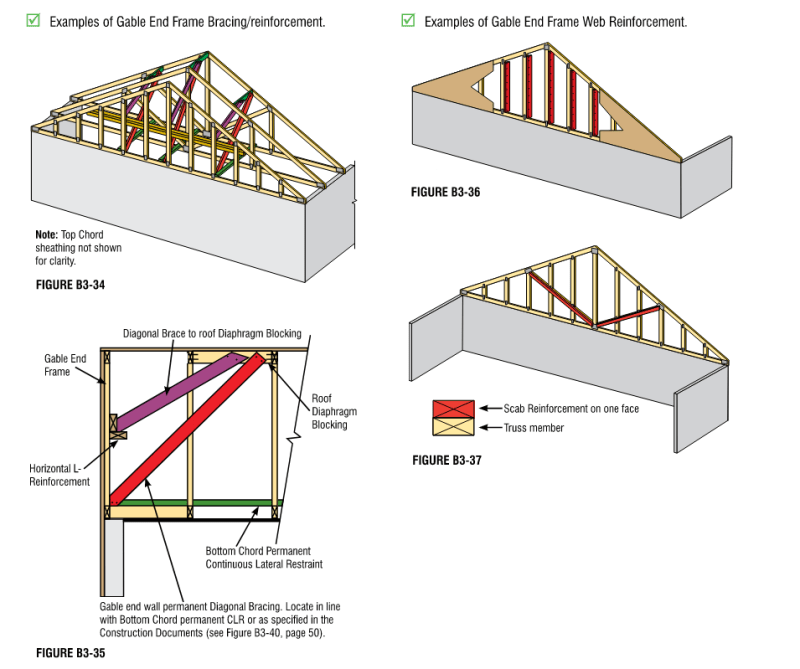skeletron
Structural
- Jan 30, 2019
- 881
I'm wondering what detail designers are specifying at the gable end truss. Recently, I have had two contractors immediately give me the gears for using a detail that was part of the company detail book. The key components are:
-drop top chord gable truss
-outriggers
-2x brace @ 2' up to the ridge blocking at the second truss
The question each contractor has is: why isn't the brace from the top chord to a "rat track" on top of blocking at the bottom chord?
Do you specify the brace going up or down? Why?
Any explanation I've been given offers:
-better resistance to uplift
-better stability
-historically always done that way
-drop top chord gable truss
-outriggers
-2x brace @ 2' up to the ridge blocking at the second truss
The question each contractor has is: why isn't the brace from the top chord to a "rat track" on top of blocking at the bottom chord?
Do you specify the brace going up or down? Why?
Any explanation I've been given offers:
-better resistance to uplift
-better stability
-historically always done that way


